Drop it like it's hot! The best dropper seatposts and levers for gravel bikes
Do you want more speed, control and awesomeness from your gravel bike? Then you want a dropper seatpost. Here's our pick of the best posts and levers your money can buy (whatever your budget)

Best budget
1. Most adjustable
2. Best for price
3. Best small drop
4. Best external
Best premium
1. Best for reliability
2. Best for speed
3. Best for no clutter
4. Best for options
Commonplace on mountain bikes, dropper posts allow you to easily lower the height of your saddle. In turn, this allows you more space to move your weight around in order to get more grip and better control of your bike.
Typically, most people think about using a dropper to allow them to get their weight lower and further back on steep terrain, but this is only a small part of it. Being able to drop your center of gravity, lean into corners and get out of the wind can all really help with better control and speed on all sorts of terrain. Not only is this an obvious benefit for many a gravel rider, but roadies are starting to see the benefit too (just ask Matej Mohoric).
If you fancy upgrading to a dropper post, then there are plenty available. In fact, there are so many available that narrowing down your choice can be difficult.
To help, we’ve reviewed eight top gravel dropper posts and levers in this guide, separating into 'budget' and 'top end' posts. To make this as 'gravel specific' as possible, we’ve only tested posts that are most likely to be suitable for gravel bikes: 27.2mm diameter, drop of 100mm or less and have a lever that is compatible with drop handlebars.
We’ve got lots of other information about how to choose a dropper after the reviews; there are a few things to think about to ensure your post fits your bike.
And for even more grip, speed and control don’t miss our Best Gravel Tyres Buying Guide.
The quick list
Budget dropper posts
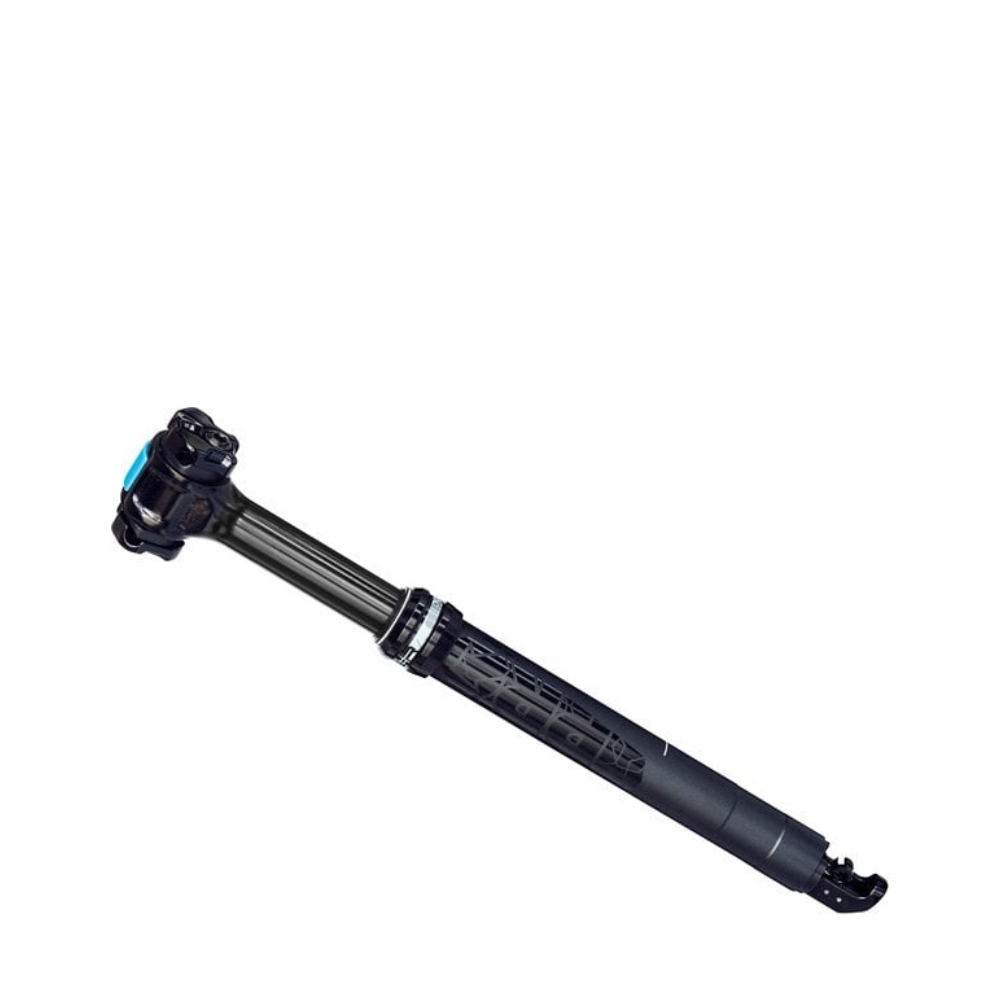
Most adjustable
Simple to adjust and easy to operate, there is a lot to like about PRO's gravel-specific Discovery 70. The lever was generally straightforward to use but could occasionally be a little awkward.
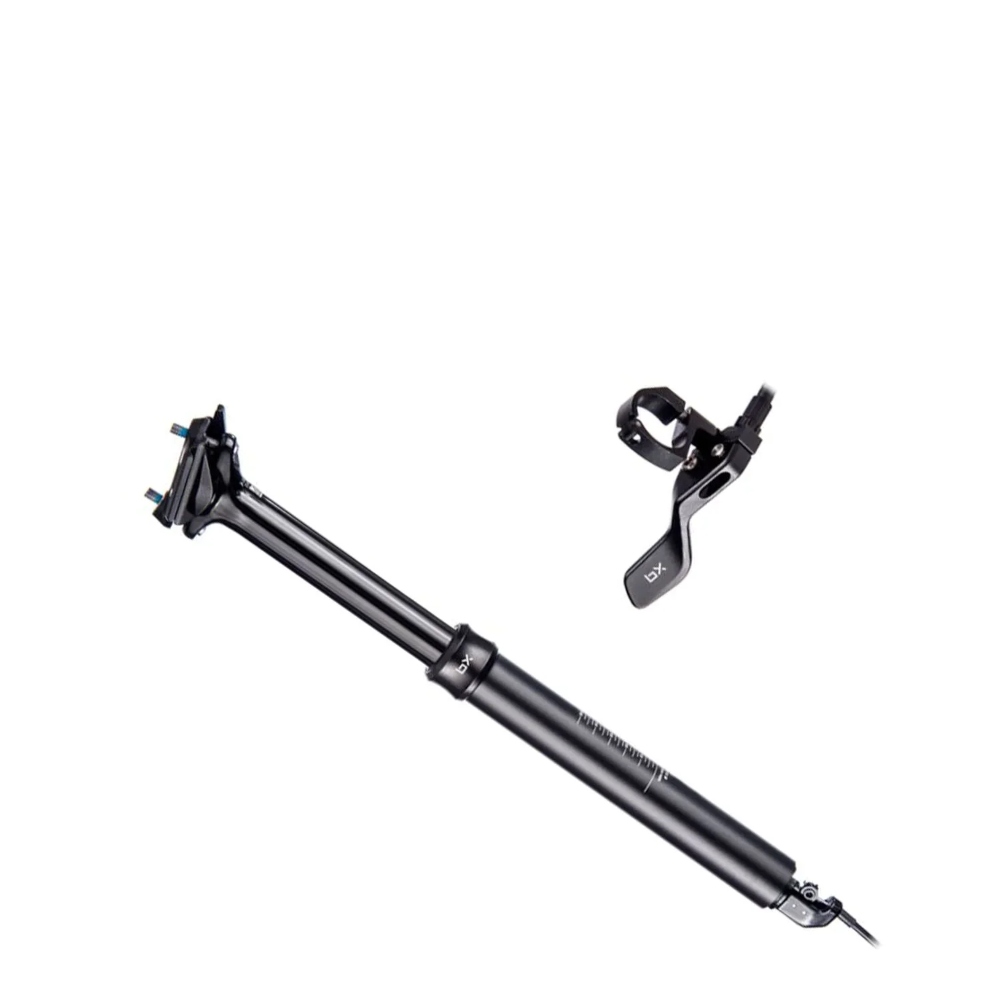
Best for price
Its price makes it a good choice for the dropper-curious, but no one will be disappointed by its performance on the trails. Only its weight and the easily swapped lever position lets it down.
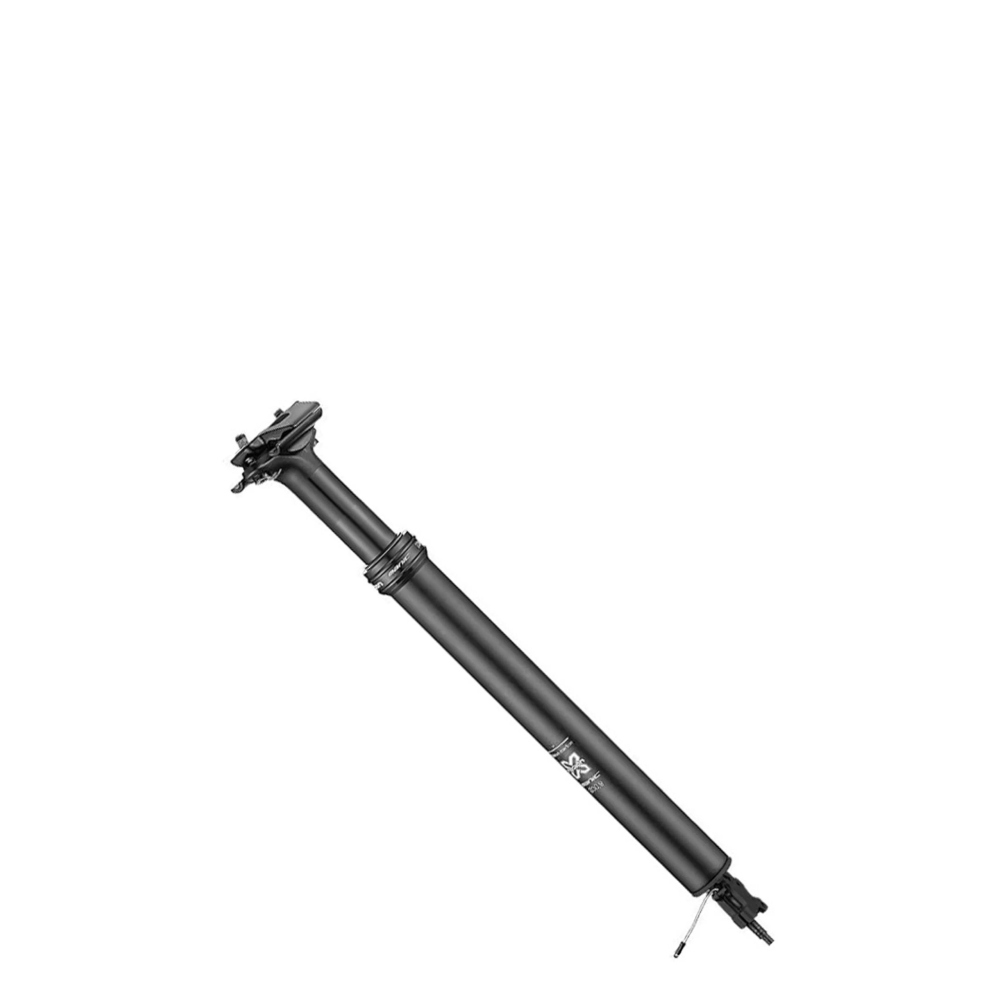
Best small drop
The Manic Gravel only drops 50mm, but this is sufficient for most gravel riding and allows it to be used on bikes where there isn't much post showing out of the frame. Serviceable parts and reliable performance add to its attractiveness although the lever is a little clunky.
Premium dropper posts
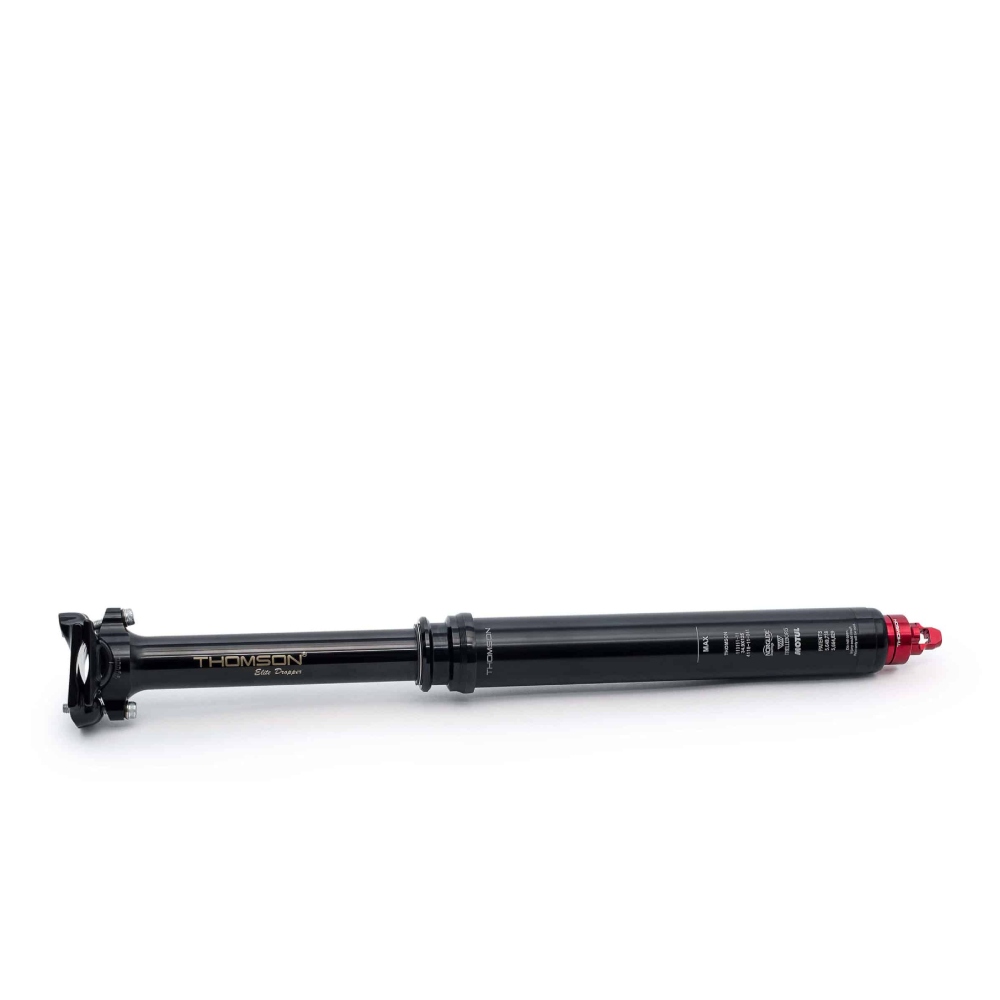
Best for reliability
Beautifully made and solid feeling, Thomson's Covert Black had no play and a light operation. The MTB-style lever also had an easy action, but the location on the tops won't be ideal for some riders.
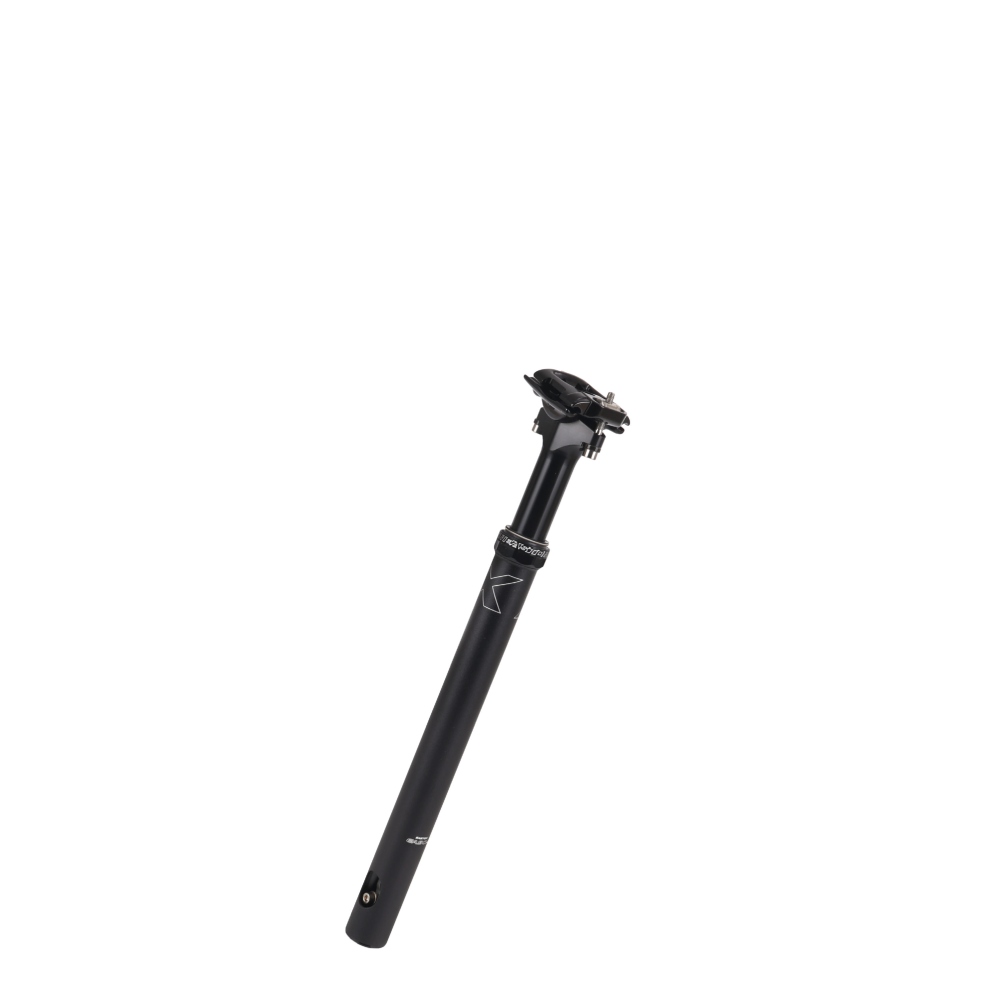
Best for speed
Light and quick to deploy, the EA90 AX certainly feels premium. It isn't 'infinite' travel though and the lever isn't included in the dropper price. The Easton lever was easy to use and nicely made though.
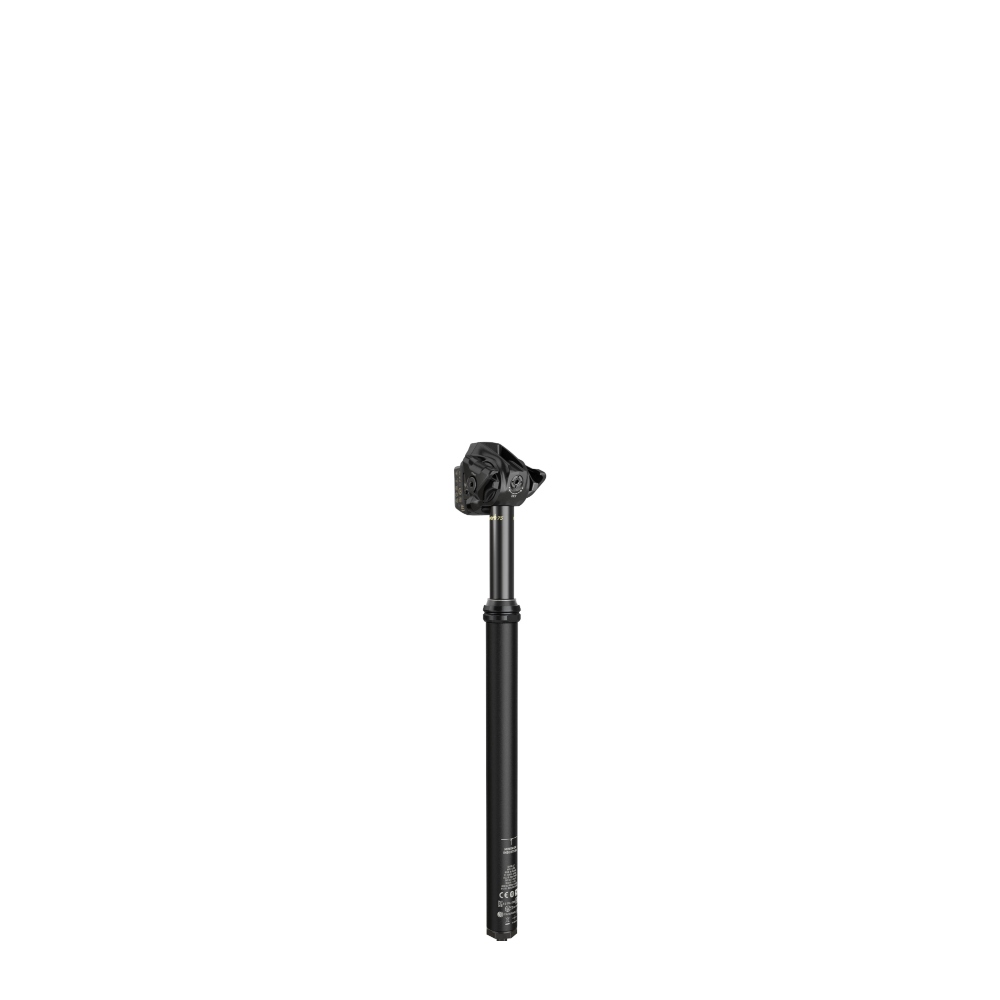
Best for no clutter
Not just for those with wireless AXS drivetrains, the cableless Reverb AXS XPLR can be used with any groupset. Very simple to install and effortless to use, this convenience does come with a weight and price penalty.
Best budget dropper posts for gravel bikes
Best dropper for saddle adjustability
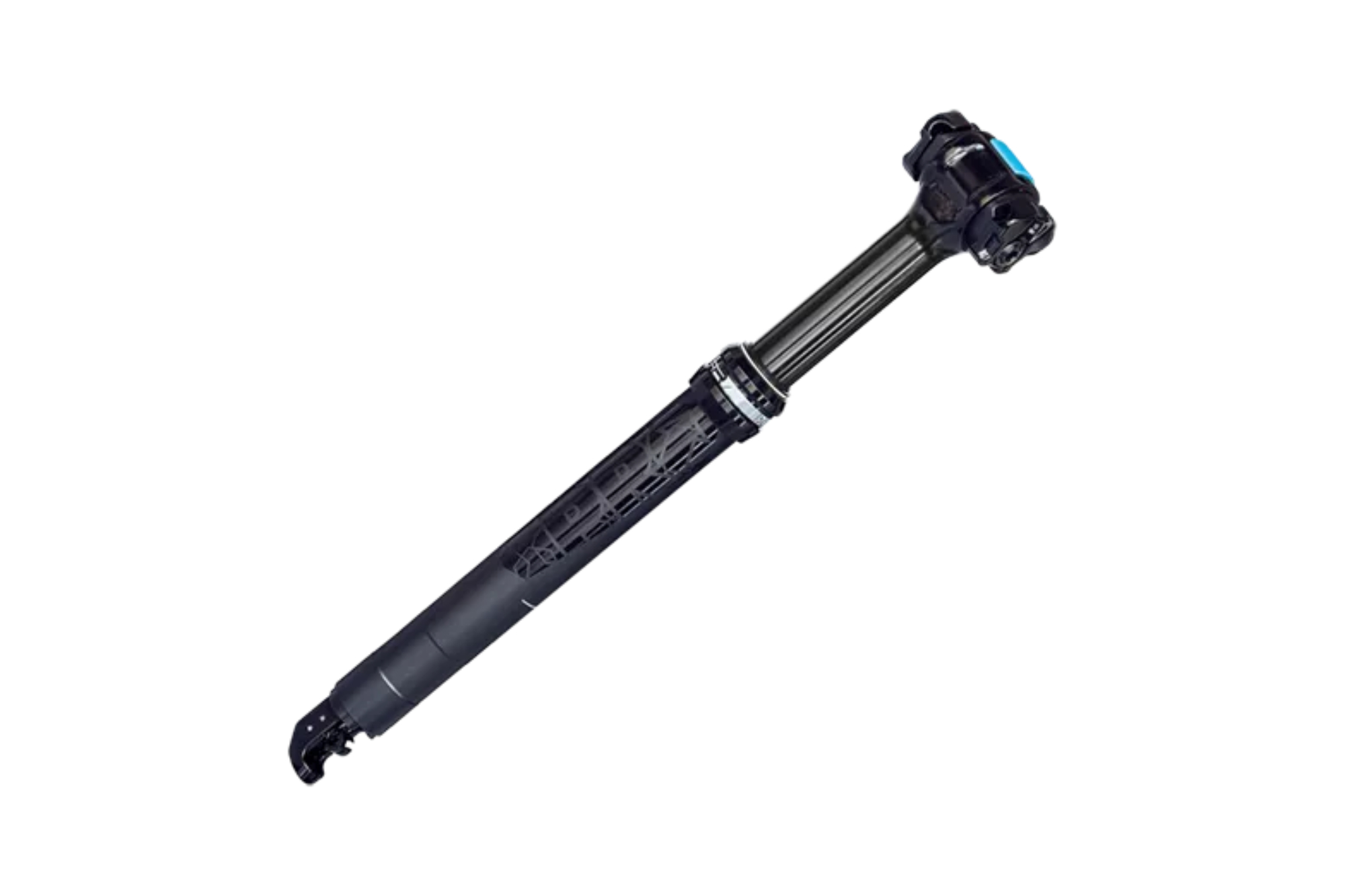
PRO Discovery 70 dropper post
1. PRO Discovery 70
Our expert review:
Specifications
Reasons to buy
Reasons to avoid
The Discovery 70 is marketed as a gravel specific post with its 27.2mm diameter and 70mm drop and, as such, is a good fit for the majority of gravel frames. PRO also has an externally routed 70mm drop post called the Koryak 70.
The standout feature of this post is the head bolt clamp which uses a single bolt that runs laterally through the head rather than two vertical bolts. It’s incredibly straightforward to fit the saddle rails into the clamp and really simple to adjust and tighten. Not only is it simple to do, but the position of the bolts means you don’t risk catching and scratching the dropper stanchion with hex keys which can happen on other droppers.
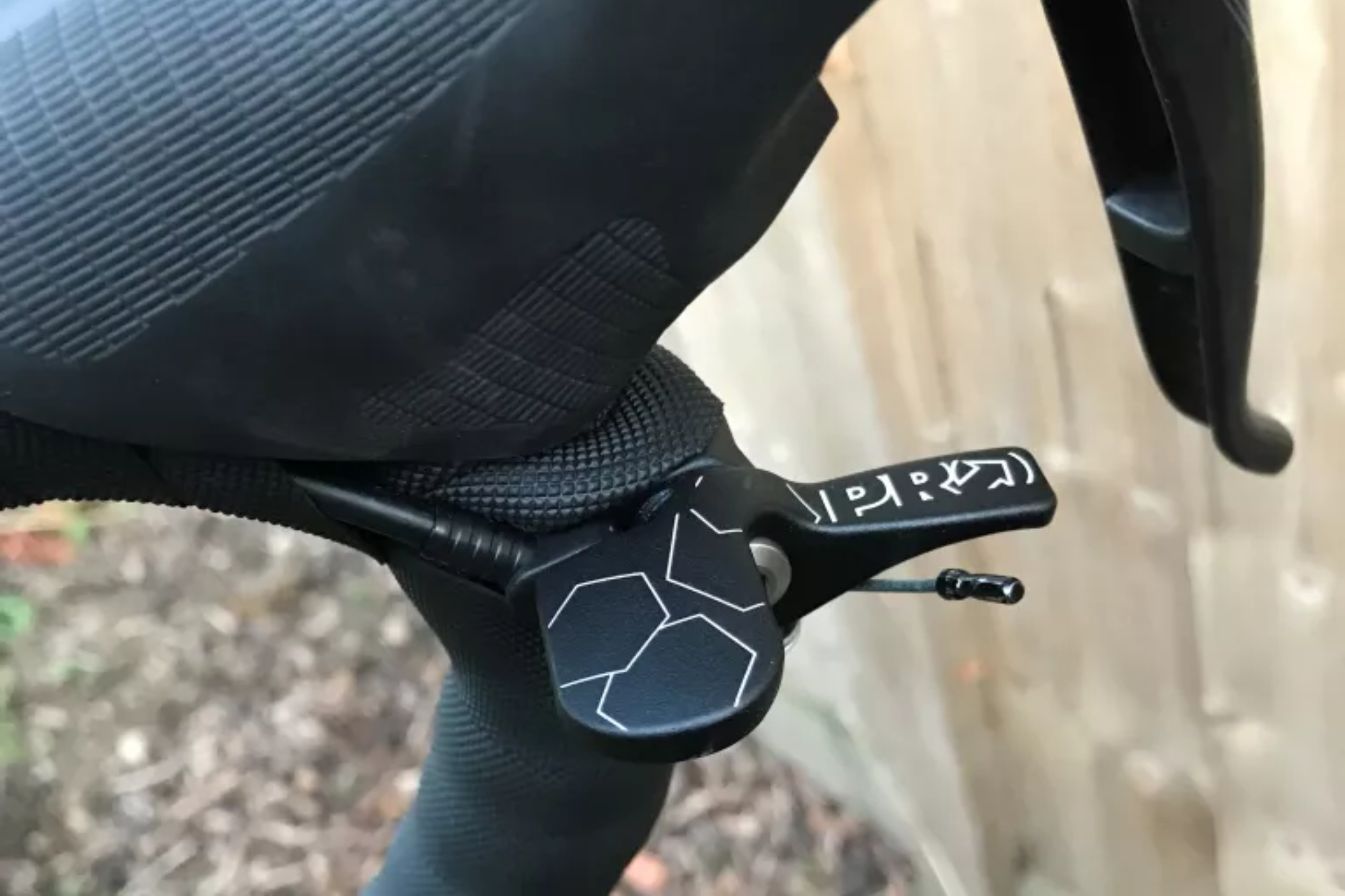
PRO Discovery 70 dropper lever
On the bike, the post operates nicely and smoothly with very little fuss. Compared to others at this price point, it didn’t require quite as much weight through the saddle to operate and returned a little faster too.
The lever sits neatly in the drops and was easy to position. We really liked the two-way operation which you can operate with your index finger when on the hoods or thumb on the drops. This two-way operation minimizes the hand-repositioning faff you need to go through as you prepare to descend or want to return the post to extension as you power up the next climb. The longer finger trigger was much easier to operate than the shorter thumb one which could be difficult for smaller / less strong thumbs to activate.
Best for the dropper curious
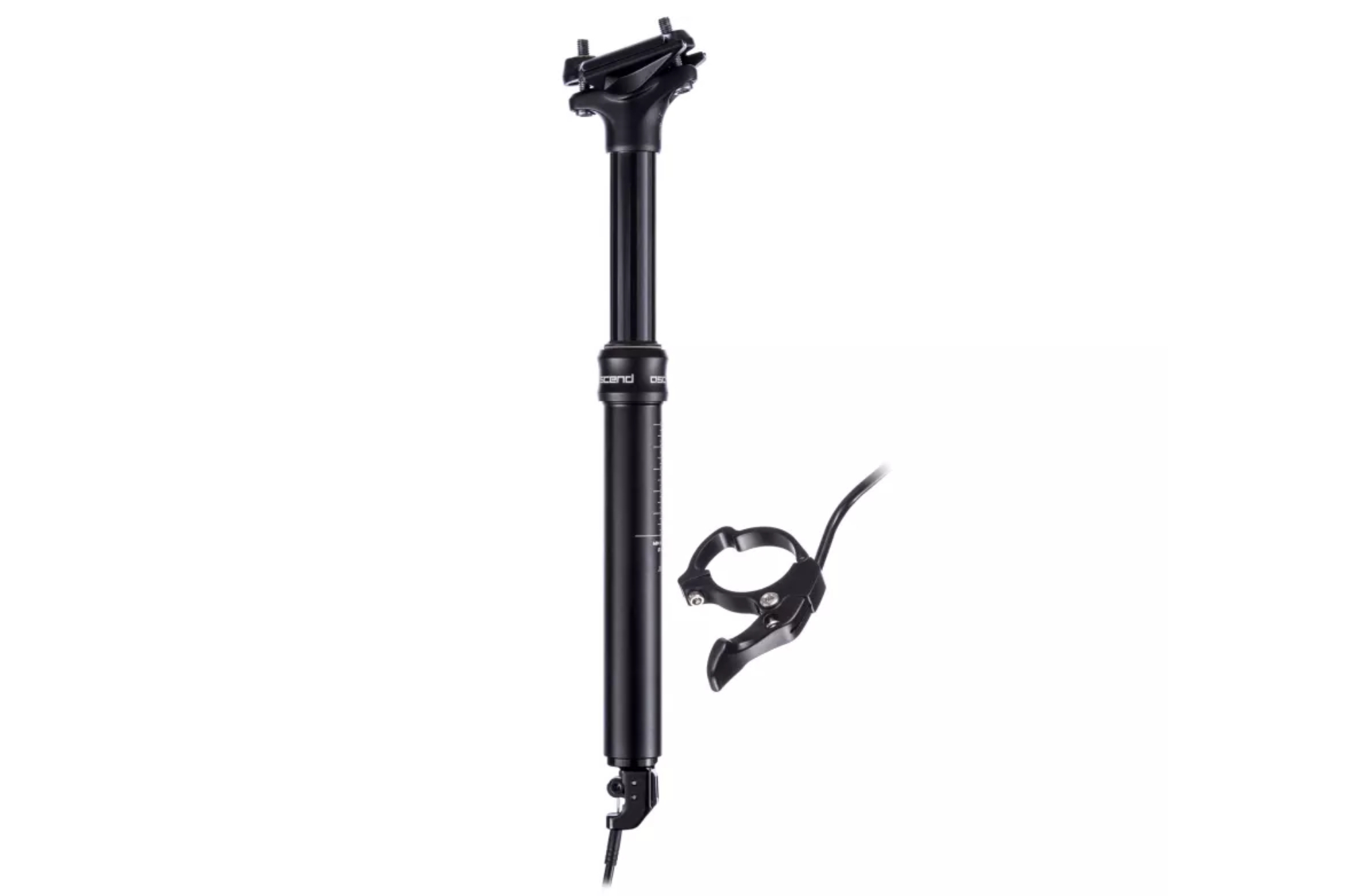
Brand-X Ascend CX dropper post
2. Brand X Ascend CX dropper
Our expert review:
Specifications
Reasons to buy
Reasons to avoid
Brand-X has developed a strong reputation in the mountain bike world for cheap, reliable and easily serviceable dropper posts. Now the Ascend CX dropper post offers that for gravel bikes too.
The 27.2mm post is available with an 85mm or 105mm drop and comes with a paddle-style lever. It’s pretty weighty, coming in 50-100g heavier than other more expensive posts. On the trails the Brand X has performed really reliably for us and always did what we wanted it to do. The action was nice and smooth although, as expected from a budget post, felt a bit slow at times.
The lever is shaped to fit on the top of your bar near the stem. The shaping of the 31.8mm clamp means that it neatly fits over your cables, something that is particularly useful if you run narrower bars.
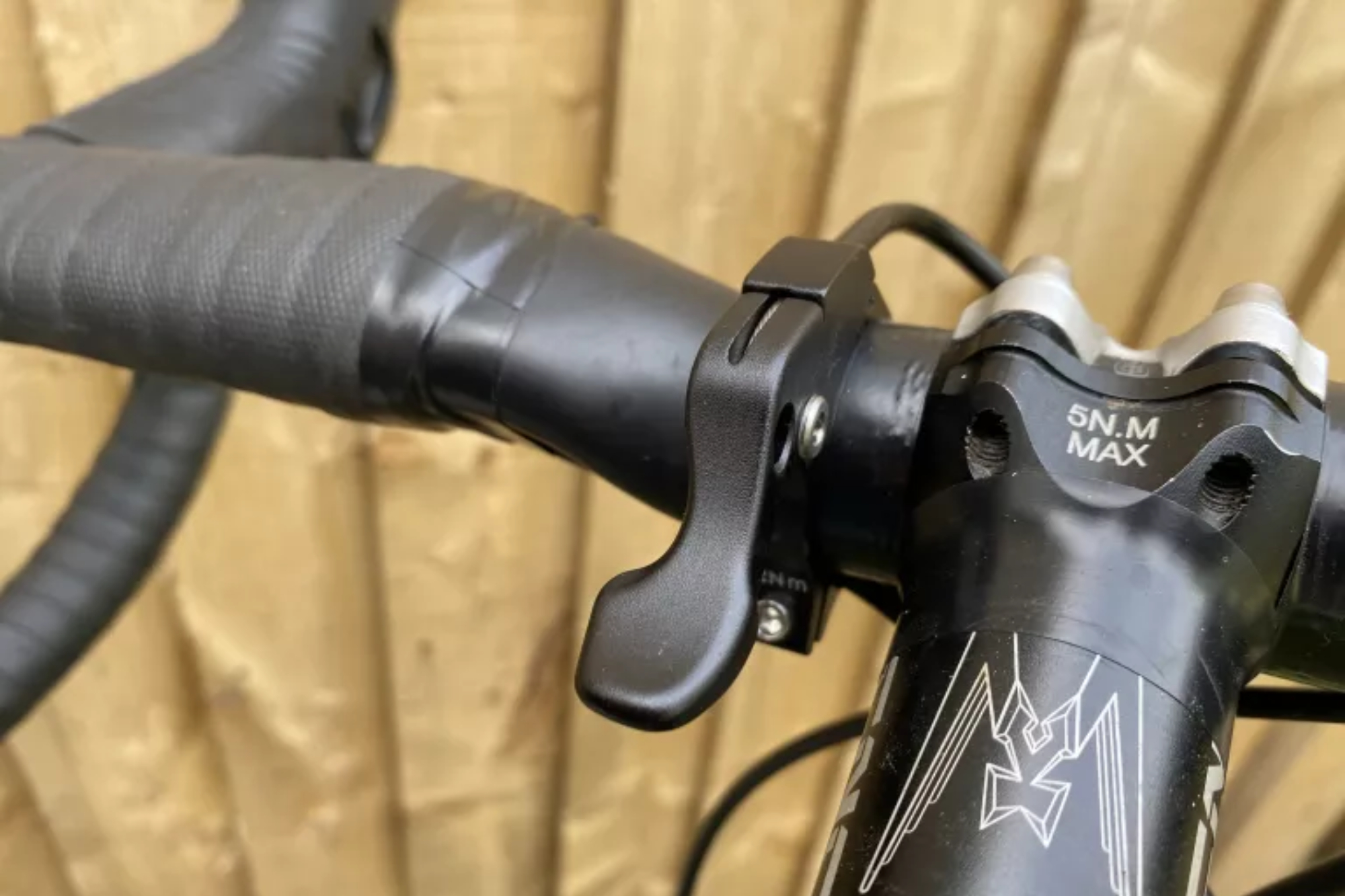
Brand-X Ascend CX dropper lever
The basic design and the positioning of the lever means it isn’t the easiest to operate quickly as you need to get your hands in position and be quite deliberate with it. A simple upgrade would be to indulge in a different dropper lever as the post can be cabled either way so is compatible with most. We spent most of the time running the Ascend with a Shimano GRX lever which worked very nicely.
We could have saved ourselves time on this review if we’d started by saying that the Brand X post $134.99 / £140 RRP (and usually available at a good discount). At that price it’s very hard to grumble about the Ascend, it’s the perfect post for anyone who wants to try out a dropper without spending a fortune.
Best small drop
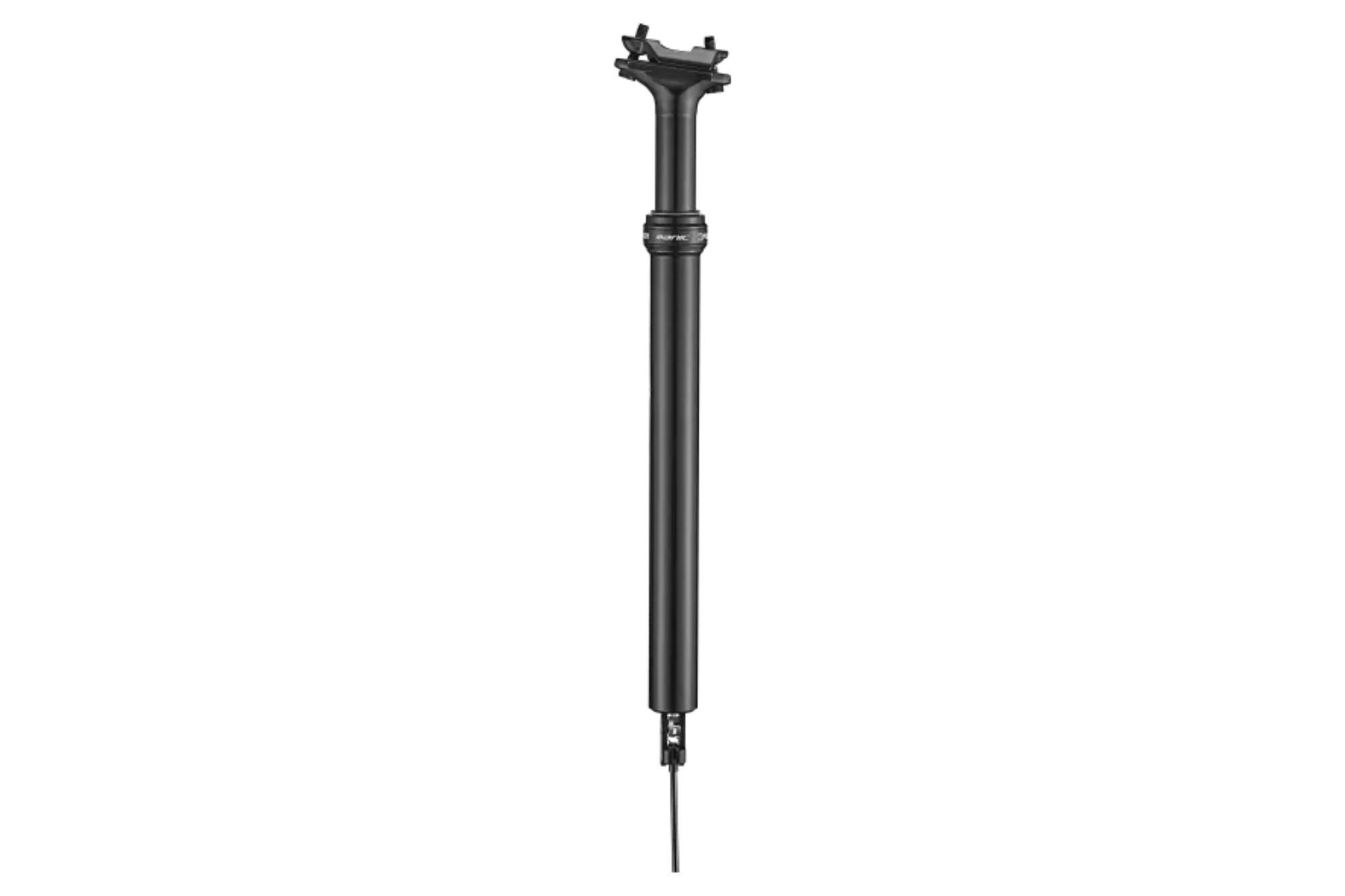
X-Fusion Manic Gravel dropper post
3. X-Fusion Manic Gravel
Our expert review:
Specifications
Reasons to buy
Reasons to avoid
One thing that can stop you from fitting a dropper to a gravel bike is a lack of exposed seat post. Your bike will never be able to accommodate 100mm of drop if you only have 80mm of post showing. Step forward the X-Fusion Manic Gravel.
With just 50mm of drop, the Manic is the go-to for those with less seat post out the frame, a common feature on gravel bikes. This useful sizing and the reputation of X-Fusion are the reasons that the Manic is commonly found on gravel bikes which are spec’d with droppers by manufacturers.
The Manic has a smooth and light motion. This is particularly notable at the cheaper end of the market where it sits where posts can often feel a little heavy.
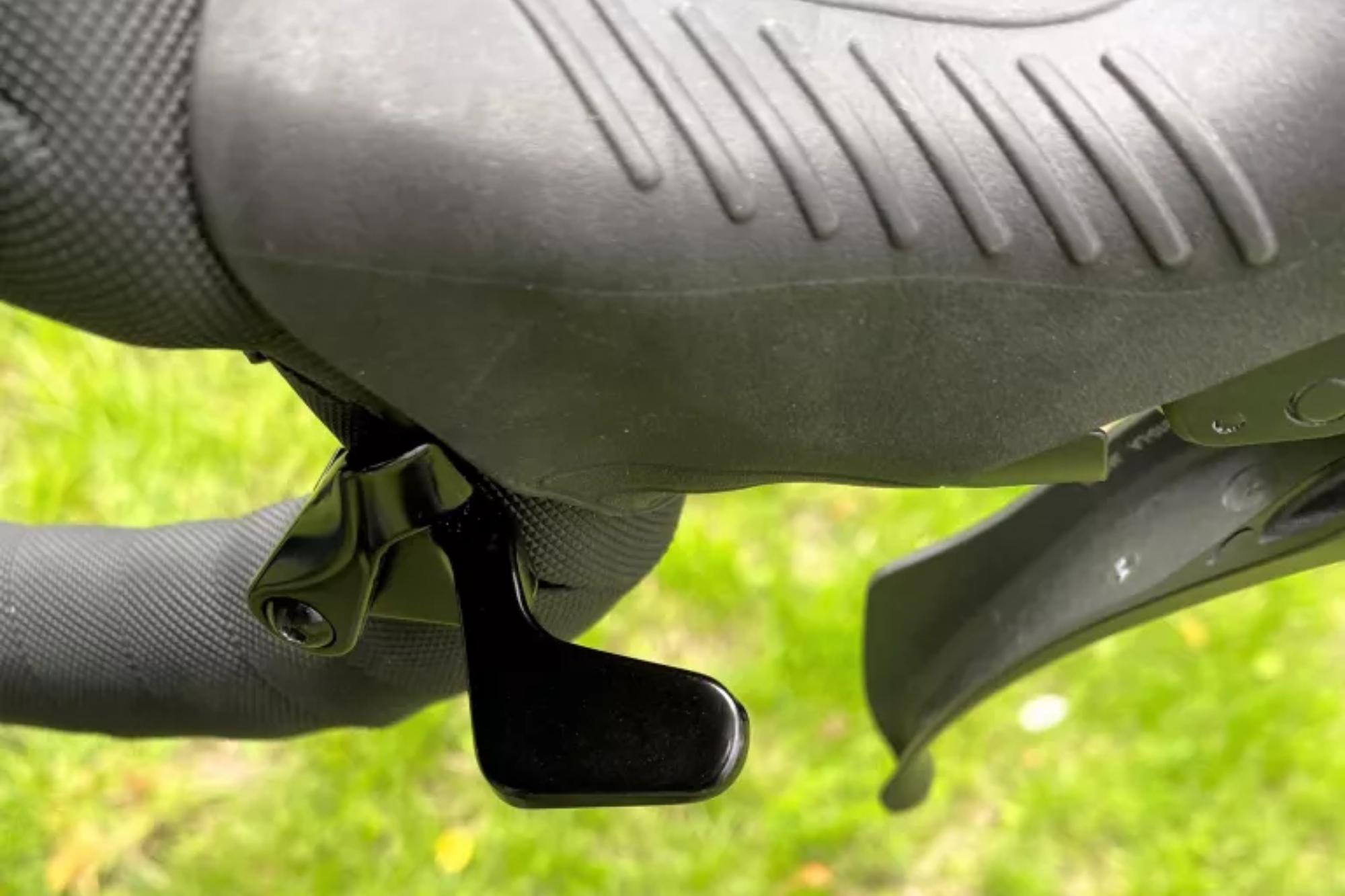
X-Fusion Manic Gravel dropper lever
In our few months of testing, we haven’t had a single issue with the activation of the post although it’s reassuring to know that the internals are reasonably straightforward to service for maintained performance and increased longevity. Parts are easily available and X-Fusion has a clear guide on the website.
The drop bar lever is designed so that it can be activated from either the hoods or the drops. Compared to some of the other levers we tested it does lack a little refinement, mainly as the pivot and fixing of the lever are more prominent than others and therefore harder to position where it’s both easy to activate and out of the way of your grip. If you’re looking at alternatives, the lever-to-post run of the cable means the Manic pairs particularly well with the Shimano GRX lever.
If you want 50mm drop in a big seat post diameter, shims are also available which means you can run the 50mm post in a larger diameter seat tube without having to go elsewhere to source one. The Manic is also available in 27.2mm diameter with a 100mm drop, although without the drop bar lever.
Best for external cable routing
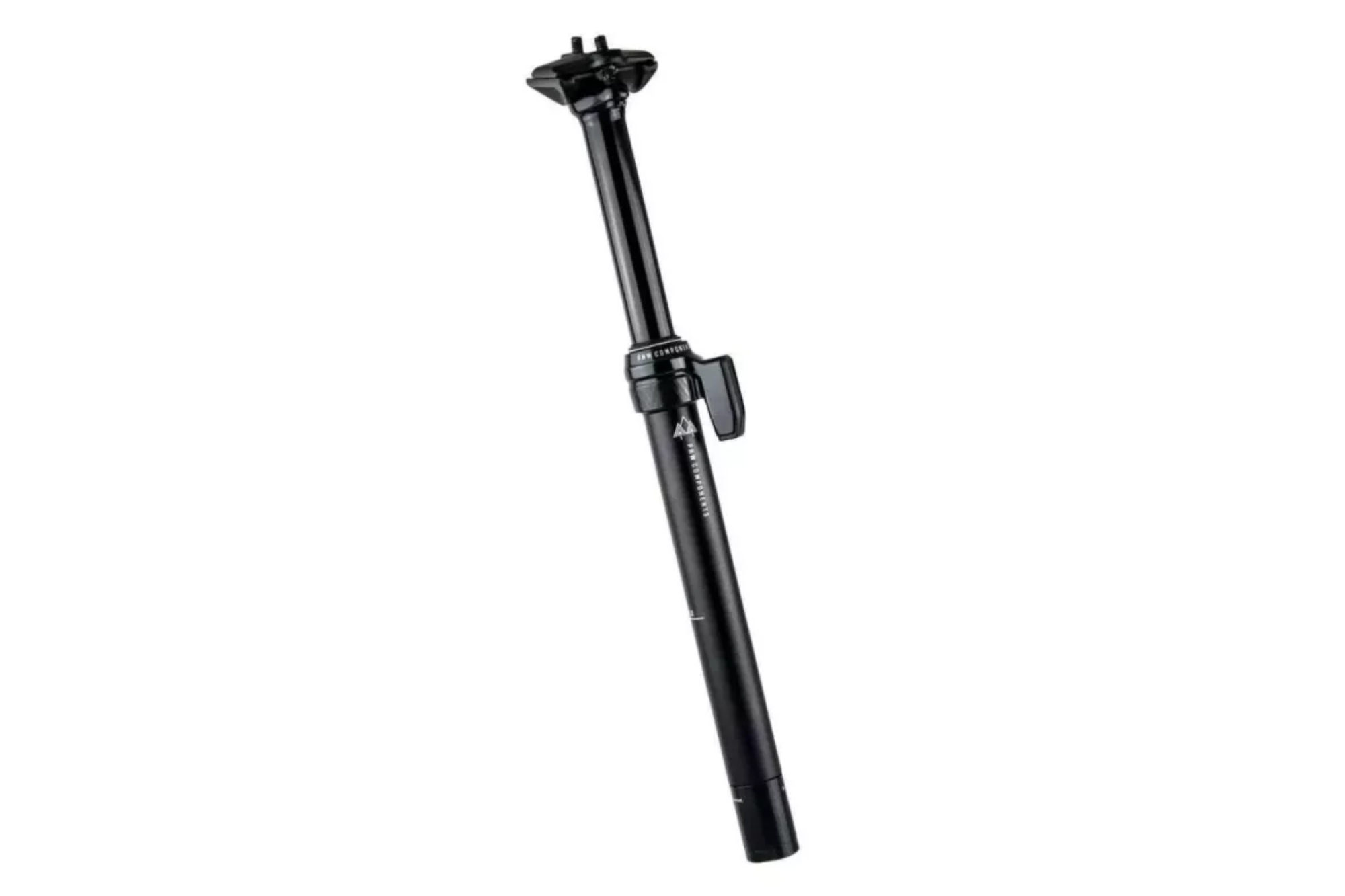
PNW Pine dropper post
4. PNW Pine
Our expert review:
Specifications
Reasons to buy
Reasons to avoid
The PNW Pine is a cartridge-operated post with externally routed cables. Externally routed cables may look less neat and tidy than internal ones but there are a few huge advantages. Most importantly you can fit to any bike regardless of whether you have the right cable ports or tube shapes (at present the majority of gravel bikes aren’t officially designed for internally routed droppers). Secondly, even if your frame can fit internal routing it can be fiddly and makes it harder to remove the post if you want to swap it on and off.
The Pine has a nice smooth operation and it performed for us without any issues during testing. It was a bit little slow to drop and return to height and it needs a reasonable amount of weight through the saddle for it to drop.
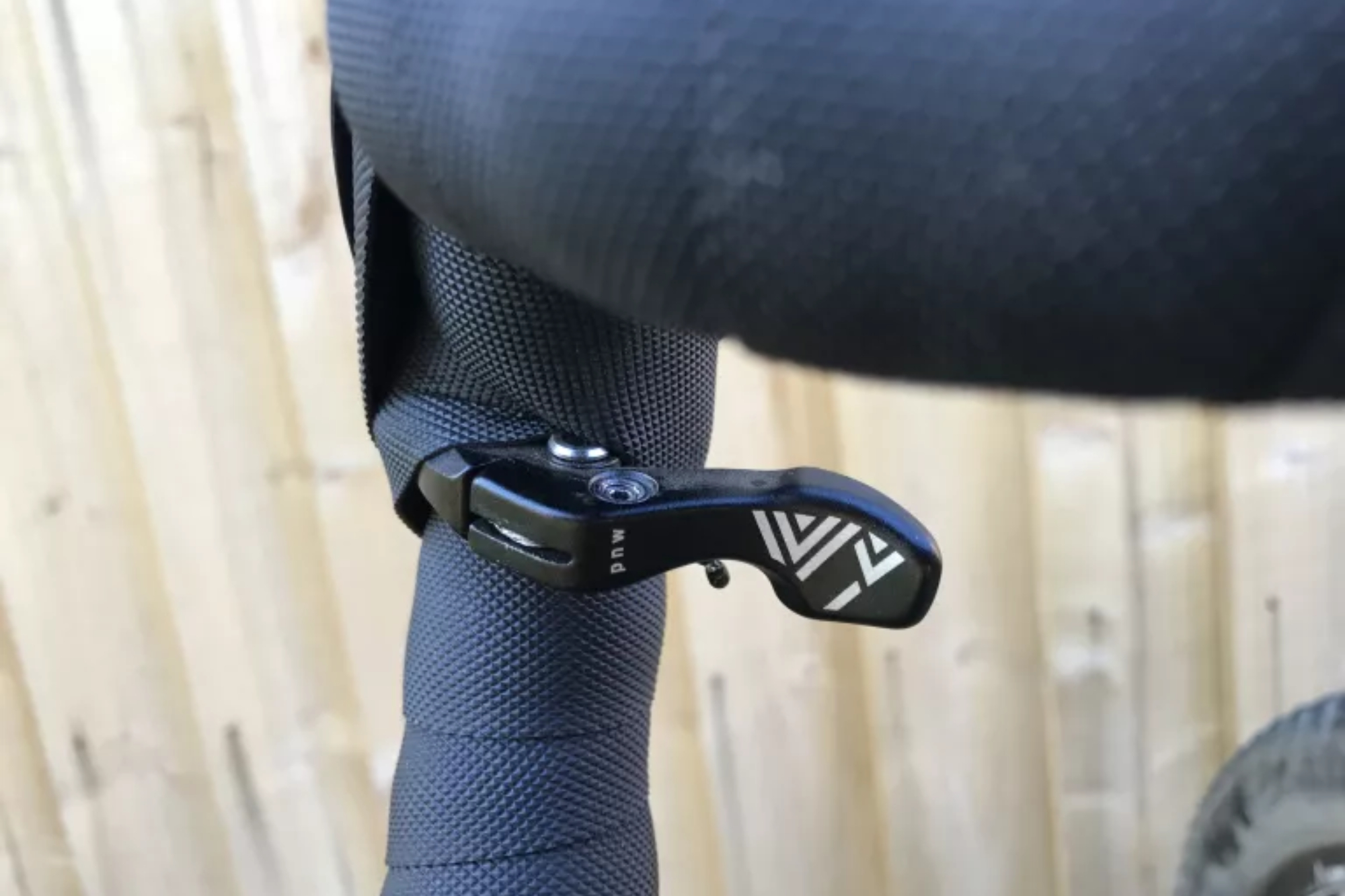
PNW Pine dropper lever
If you’re minded to, maintenance and servicing the cartridge post is straightforward and PNW has excellent videos and clear instructions with photos on its website.
The lever is nice and compact and easy to operate with your left thumb at the base of the lever hood. It was one of the smallest and neatest levers that we tested. We did find it difficult to get the right cable tension meaning the post either wouldn’t operate or would sink as we were riding. It took quite a lot of adjusting over a number of rides to get this right, a smaller barrel adjuster would have helped keep the cables neat and make the cable run easier to adjust.
Best of the premium dropper posts for gravel bikes
Best for reliable high quality
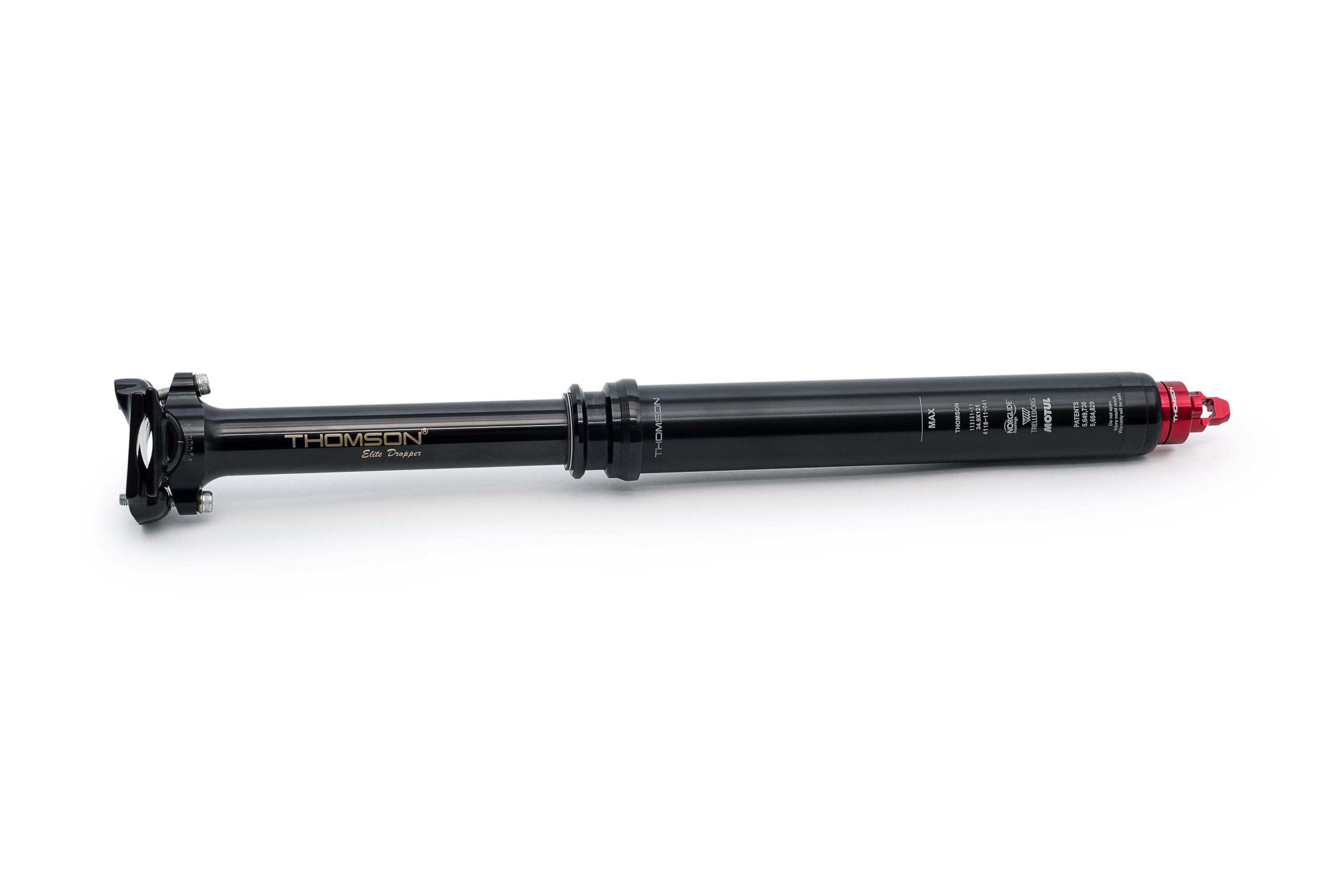
Thomson Covert Black dropper post
1. Thomson Covert Black dropper post
Our expert review:
Specifications
Reasons to buy
Reasons to avoid
Thomson’s reputation is built on reliable and beautifully made components and the Covert gives you exactly that. Everything about it exudes quality from its neat packaging to the premium cables to the post itself.
If you’re installing it yourself, Thomson provides detailed and easy-to-follow instructions which makes the job as straightforward as it can get.
On the bike, the Covert is really solid feeling with no noticeable play in the shaft. It’s easy to drop without that much saddle compression and has a nice and fast return which really suits if you want to match an ever-changing terrain. If you forget to get your bum out of the way, the fast return is damped in the last 15mm so it doesn’t bring tears to your eyes!
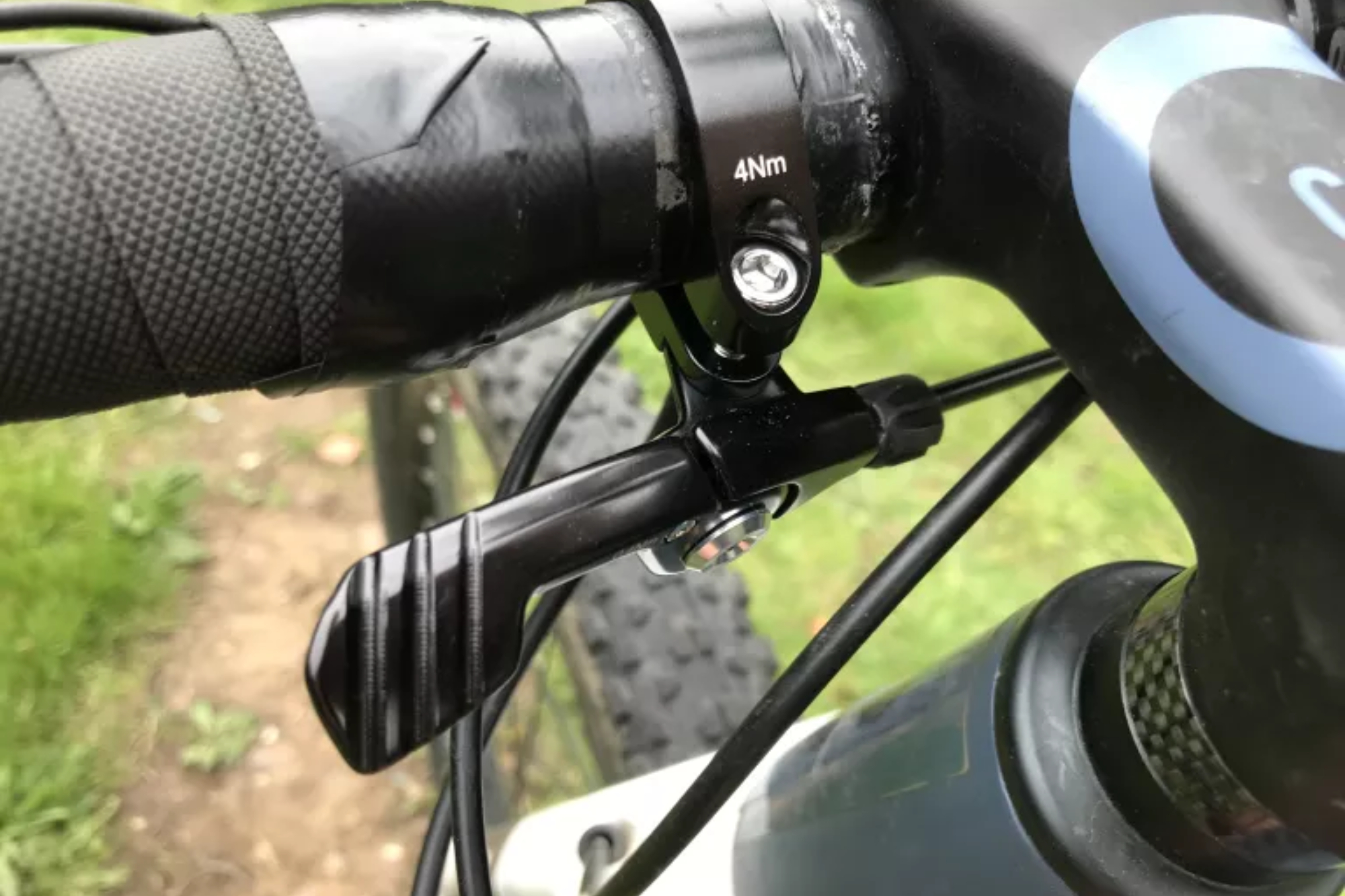
Thomson Covert Black dropper lever
The beautifully machined lever is equally as efficient and effective as the post itself. The 31.8mm clamp mounts on the section of your bars close to the stem. Unlike all the other posts in this review, the Thomson doesn’t have a drop bar specific lever rather it uses a flat bar shifter design. The lateral throw of the lever is much better suited to pulling the cable through than many of the drop-mounted levers we tested, which makes the operation nice and light.
As well as the really effective operation that the lever gives, the design means it’s mounted well out the way of the drops so doesn’t get in the way of you gripping the bar. The drawback of this design is that you do have to let go of your grip position to activate, which won’t suit all.
Best for rocket speed activation
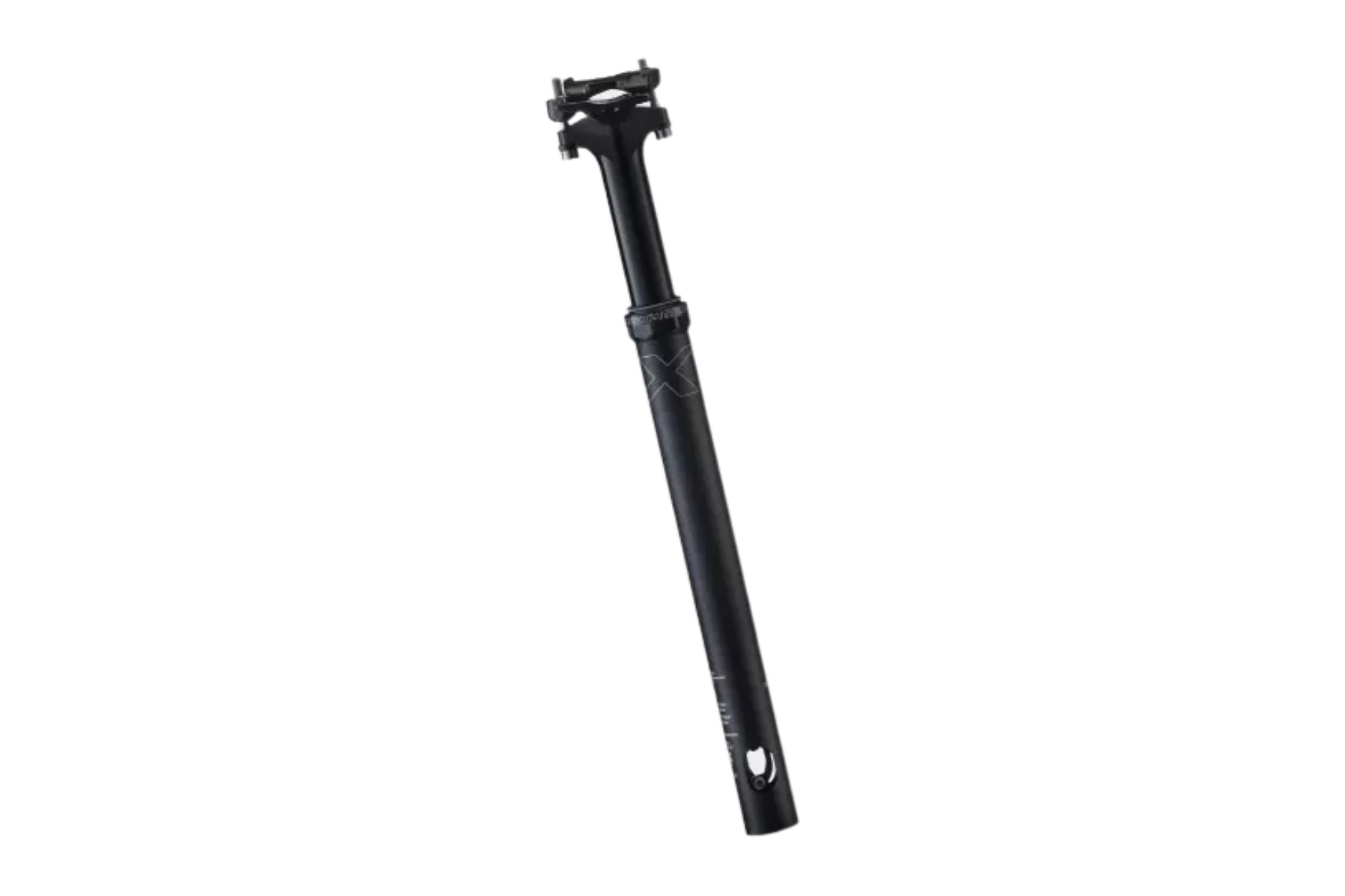
Easton EA90 AX dropper post
2. Easton EA90 AX dropper post
Our expert review:
Specifications
Reasons to buy
Reasons to avoid
Incredibly lightweight and with a beautifully designed two-way lever, the Easton EA90 AX is a post suited to those who like to do things fast.
The lever activation is quick and easy, as is the post movement. In fact it absolutely rockets and makes all the others feel pretty slow in comparison. As a rider who does a lot of mountain biking and is used to using a dropper and often rides technical terrain on gravel, this suited me as I could flit between having my saddle up and down with ease.
Some people are less keen on a post with a quick mechanism as they fear getting whacked in the groin by their saddle. I can’t say I’ve had this issue with the Easton, and even if it did catch me I don’t think the force would feel like anything more than a bit of a pat.
To keep the post as light and fast as possible it’s designed to be two-stop only (fully up or down). This means you don’t have the option to set it at half-mast if you want to do a bit of pedaling with your weight down. On a short-travel dropper it’s unlikely to be much of an issue as the difference between midway and fully up or down isn’t that great.
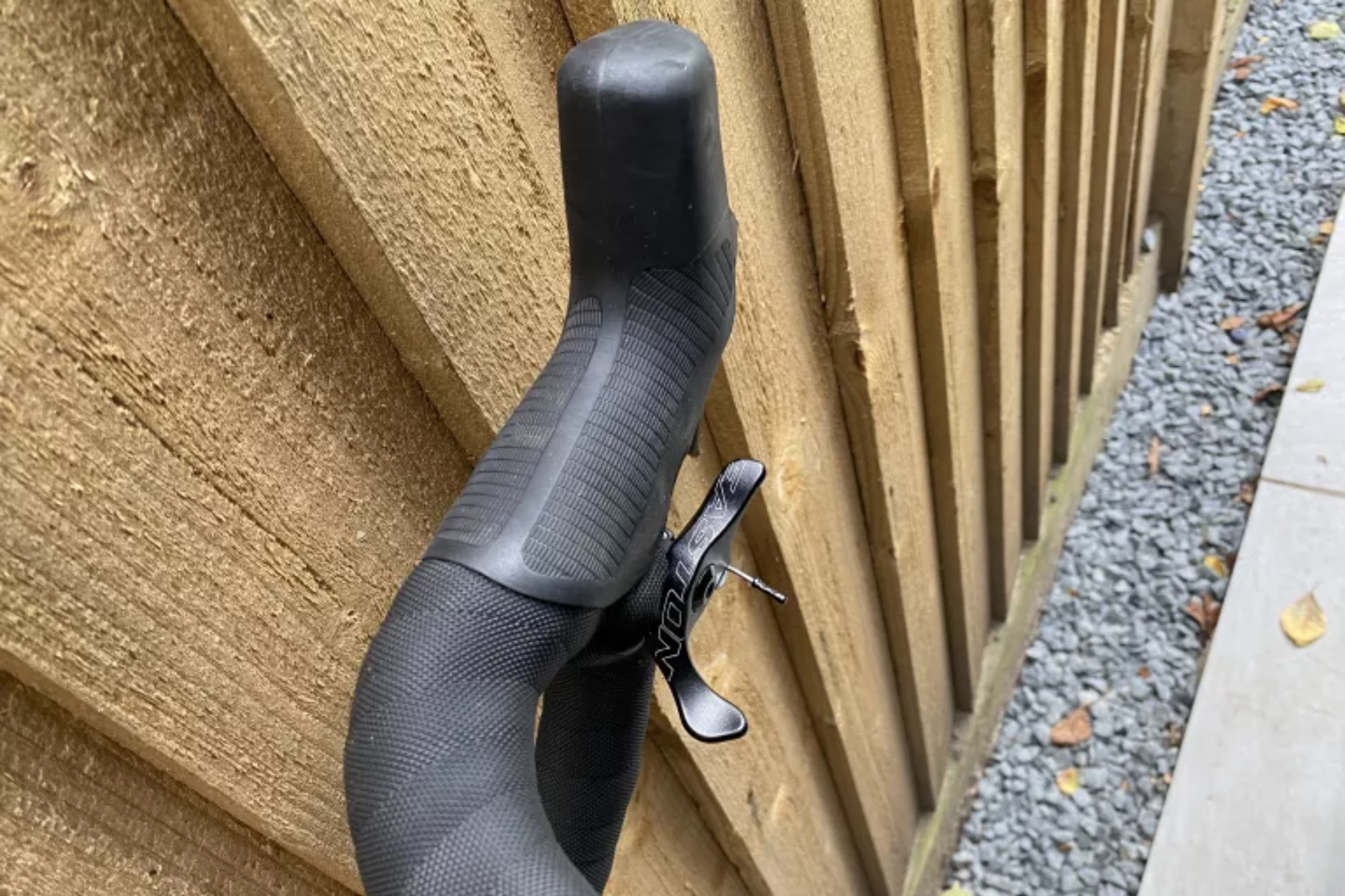
Easton EA90 AX Dropper Dual Action Remote
The Easton lever was by far the neatest, most ergonomic and most effective of all the drop bar levers we tested. The only downside was that to effectively use the lever from the tops it needed positioning a bit too far down the drops than we would have liked, and so felt a bit more in the way than it needed to be.
Owned by the same parent company, the Easton EA90 AX is a rebranding of the FOX Transfer SL post and lever, as is the Race Face Turbine SL. This gives you a much larger range of dimensions (diameters and drops) than Easton alone offers if you want something longer or in a larger diameter.
Best for cable-free cockpit and personalised set-up
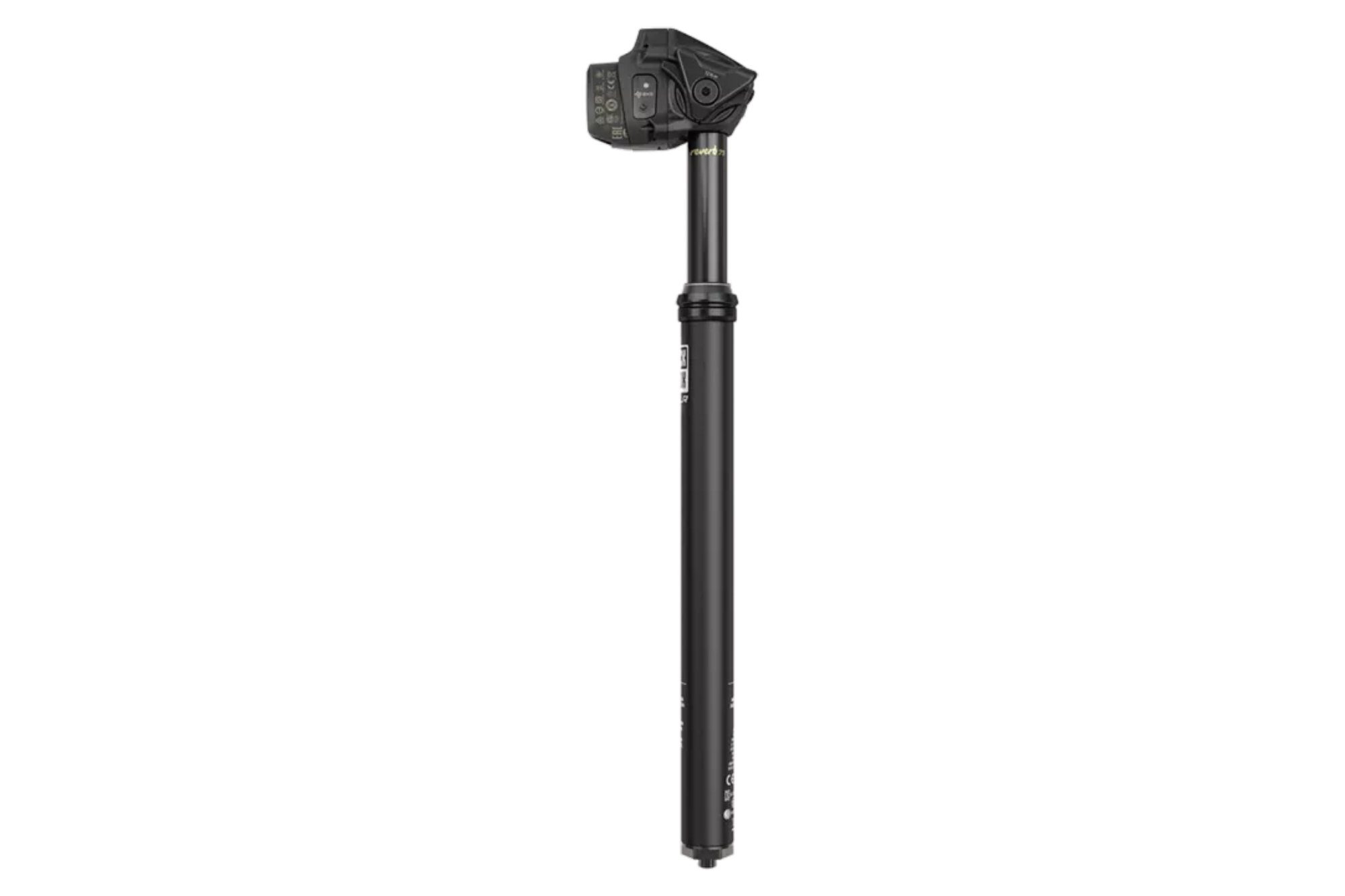
RockShox Reverb AXS XPLR dropper post
3. RockShox Reverb AXS XPLR dropper post
Our expert review:
Specifications
Reasons to buy
Reasons to avoid
We’ve already reviewed the electronic wireless Rock Shox Reverb AXS XLPR pairing it with SRAM AXS electronic shifters and mechs, head here for the full review.
But it’s not only those with SRAM electronic shifting who can look to run the Reverb XPLR. For this Buying Guide we’ve looked at how the post runs alongside mechanical shifters, using the SRAM Blipbox and Multiclics to control it.
The wireless technology makes fitting the dropper far neater and a whole load easier. It’s a really attractive option if you like keeping your frame and cockpit neat and tidy or if you want to regularly swap your dropper to a standard post for different riding. It’s also perfect if you have a frame that can’t accommodate the additional dropper cable.
Perhaps more importantly than tidiness, the electronic shifting removes the awkwardness and potential unreliability of a cabled lever. I found it a bit odd not having the tension in the lever for feedback but it didn’t take too long to get used to the button-pressing feel. I used two Multiclics and set them via the AXS app to actuate the post independently, positioning one on the left-hand drop and one on the brake hood so I could activate from the drops or tops. It’s brilliant to have the flexibility to place it in exactly the right position for your hands, an issue that the drop bar cable levers are always going to struggle with.
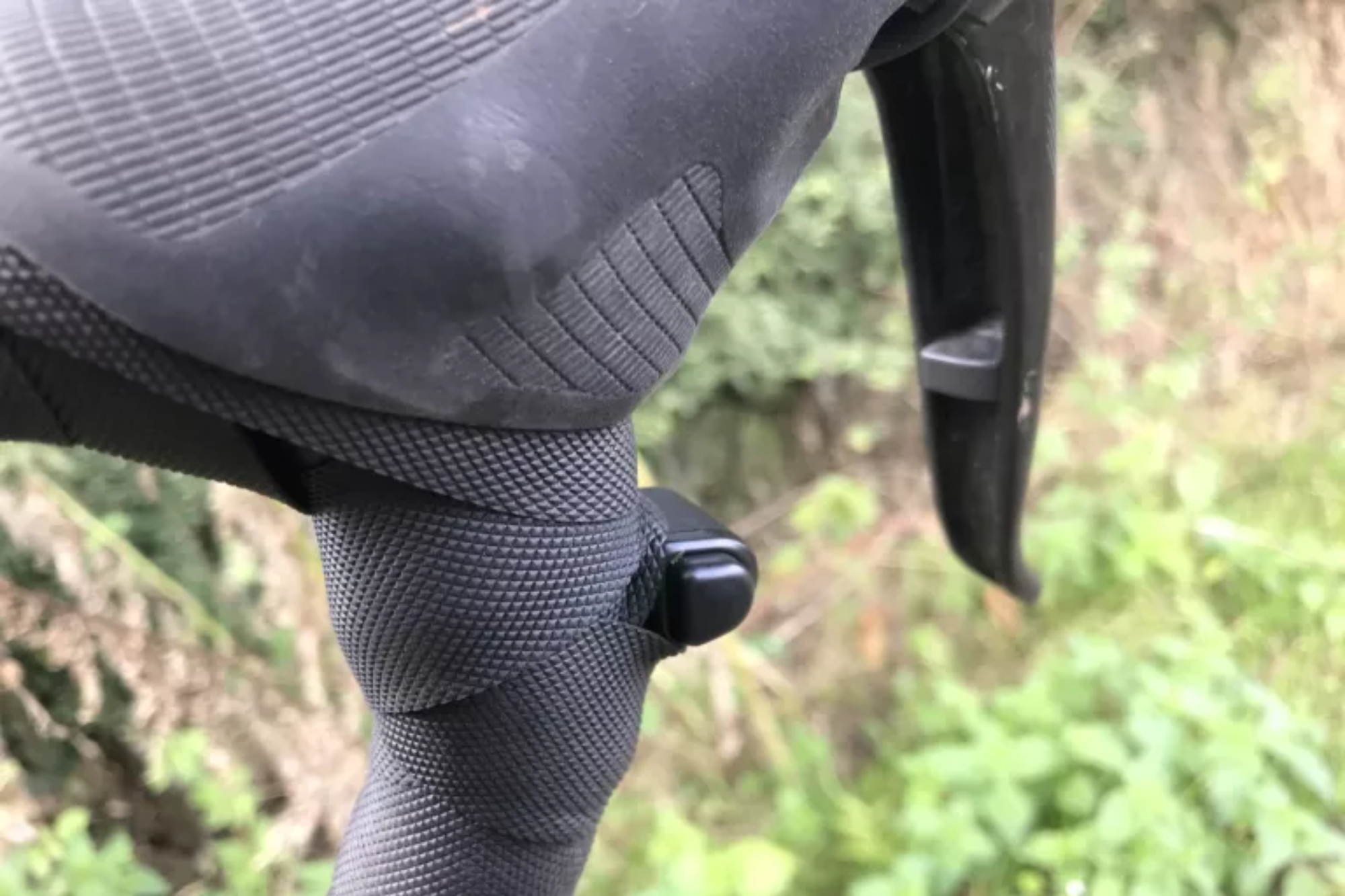
Rock Shox Multiclics positioned to activate dropper post in the drops
The post itself felt smooth and it was easy to weight it to drop or set mid-way as required. It uses air-only internals rather than the air and oil components in the longer travel posts. This keeps the weight down as well as allowing some ‘compliance’, i.e. slight suspension when the post isn’t fully extended. Personally, I didn’t use this much, as I find my tires happily do the job of providing the cushioning and it was a bit of a faff to find the point of nearly-but-not-quite extended post.
Air-only internals means that the available drop lengths in the 27.2mm Reverb AXS XPLR are limited to 50mm or 75mm. If you want something longer then the non-XPLR version is available with drops of 100mm and greater but only in 30.9 and 31.6mm seat post diameters.
The downsides? Weight for one – it’s approaching double that of the lightest post we tested – and then there’s price too. If you already run SRAM AXS shifters you’ll save yourself the cost of the Blipbox and Multiclics at least.
All the cable actuated posts we tested have a lever associated with them, but you’re actually not tied to using any particular one. Unlike flatbar levers, manufacturers haven't really settled on a preferred design for a drop bar lever. This means there are a range of different lever designs available which differ in terms of where they are positioned, their size and prominence, and whether they can be activated from the tops, drops or both.
Which is best will vary from rider to rider varying on things like preferred of hand position, hand size, frequency of dropper use and other components you run.
Here’s our pick of the best of the levers for cable dropper posts:
Best for choice of post diameter and drop length
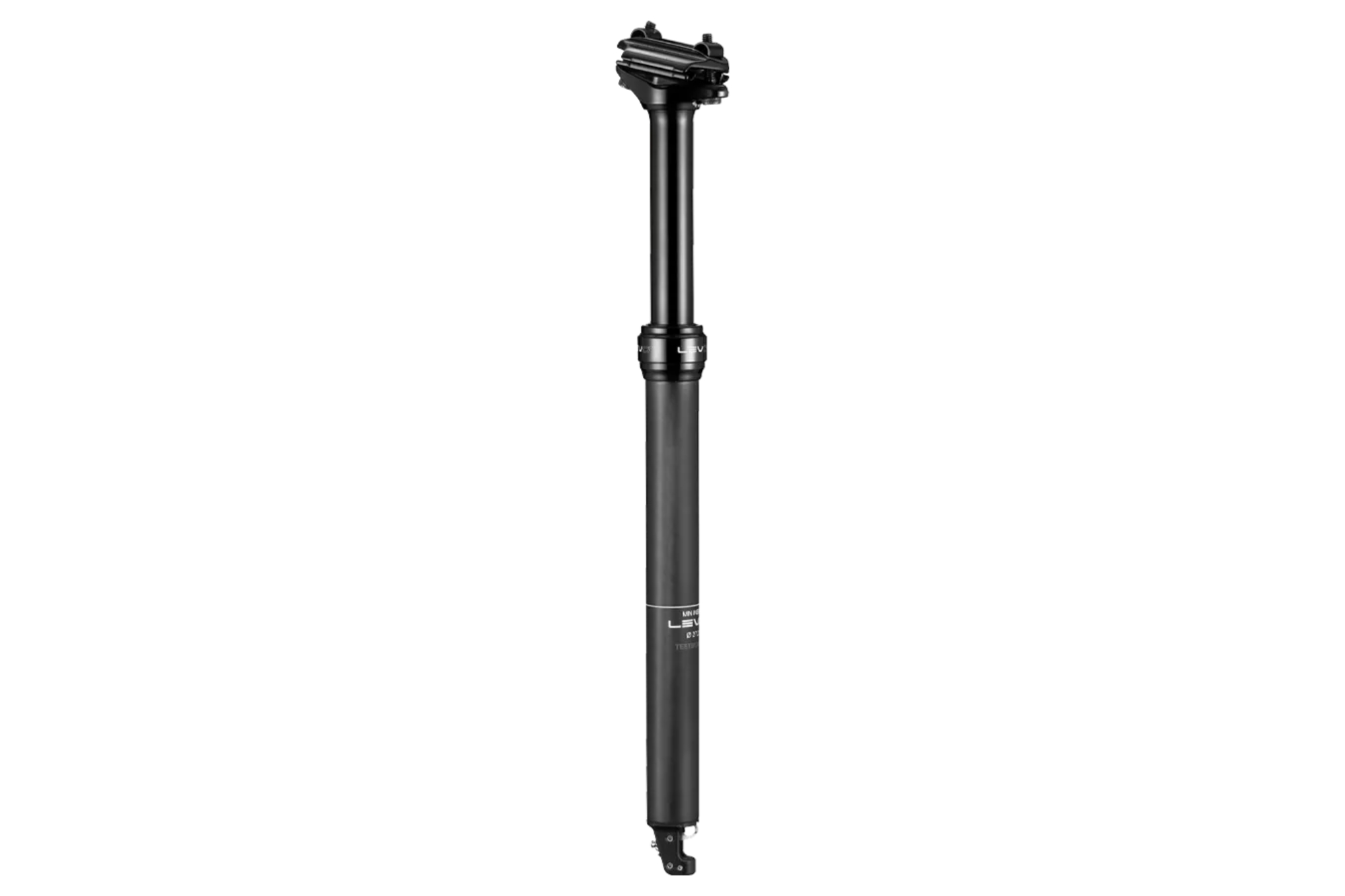
KS LEV Ci dropper post
4. KS LEV Ci dropper post
Our expert review:
Specifications
Reasons to buy
Reasons to avoid
KS offers a dizzying array of dropper seat posts to suit pretty much every imaginable combination of post diameter, drop length, price point and cable routing. We had a 27.2mm 100mm drop KS Lev Ci on test – the carbon version of the LEV Integra.
The LEV has been around for several years now, I first ran an externally routed version on my cross-country MTB in 2014 and that was a while after they first appeared. This has given KS a lot of time to improve and refine the post – and it shows.
The actuation mechanism is beautifully smooth and releases with little effort. If you use a dropper often you’ll appreciate the lower load on your thumb each time you release the lever.
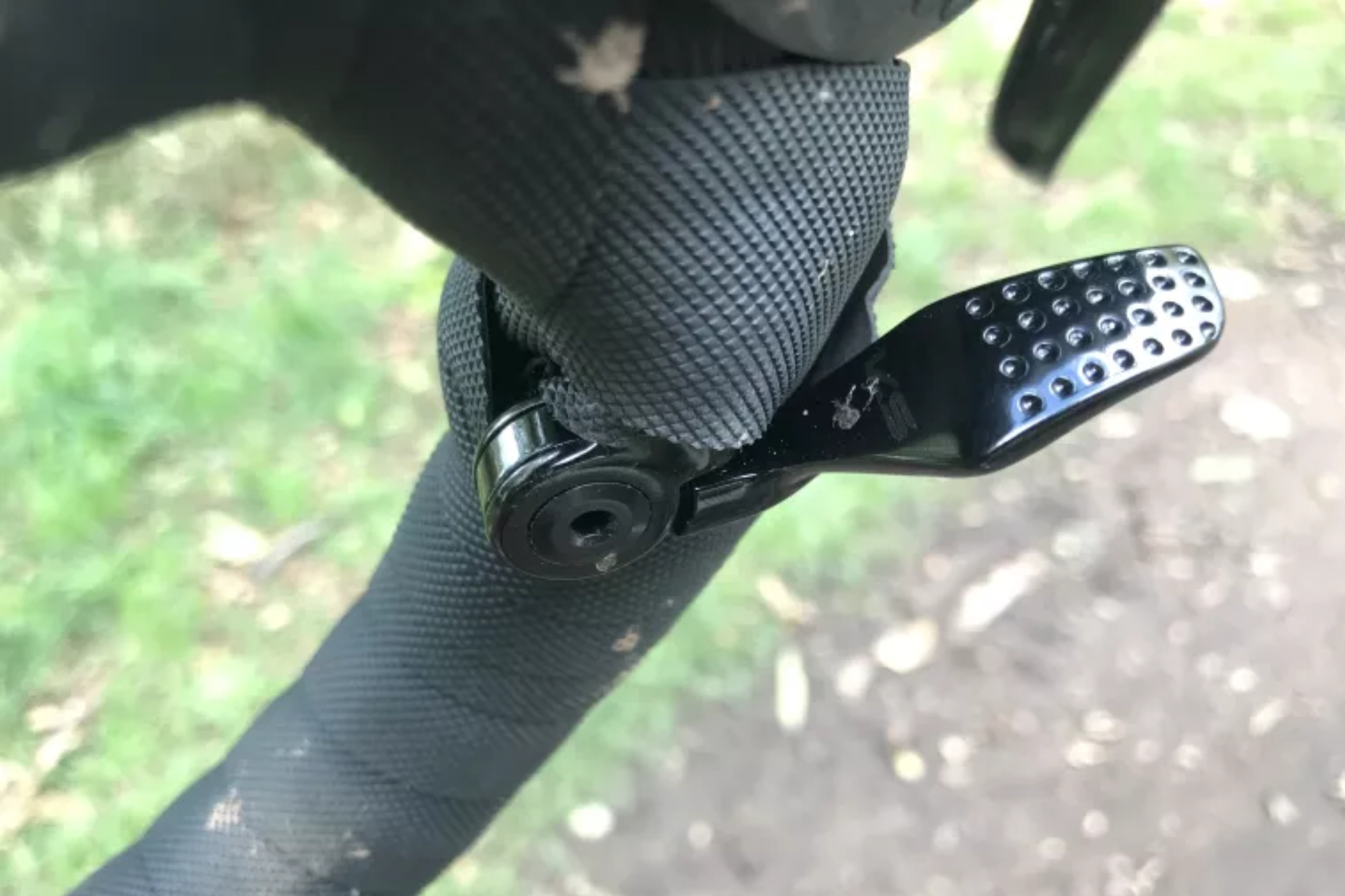
KS LEV Ci dropper lever
The LEV Ci was let down by its dropper remote. You can set it up to be activated via the tops or drops (but not both at the same time) but the more generic design doesn’t seem to work that well in either position: it’s a little too short to activate from the drops plus you need to push it down rather than a more natural up-pull.
In the drops, the cable and clamp sit in between your hand and the lever so rather gets in the way. Given that you need to purchase separately we’d recommend you look to run the LEV Ci with a different lever that better suits your setup.
There’s a really solid feel to the KS and less play than some of the other posts we tested. As well as the design of the dropper mechanism which reduces play in the post, the carbon fiber mast also contributes to the stiffness.
For a short travel post at this price point and one that’s marketed as lightweight, it’s surprisingly heavy, a good chunk more than the Easton EA90 AX and Thomson Covert (albeit the version we had on test had the longest drop of these three).
Alternative levers
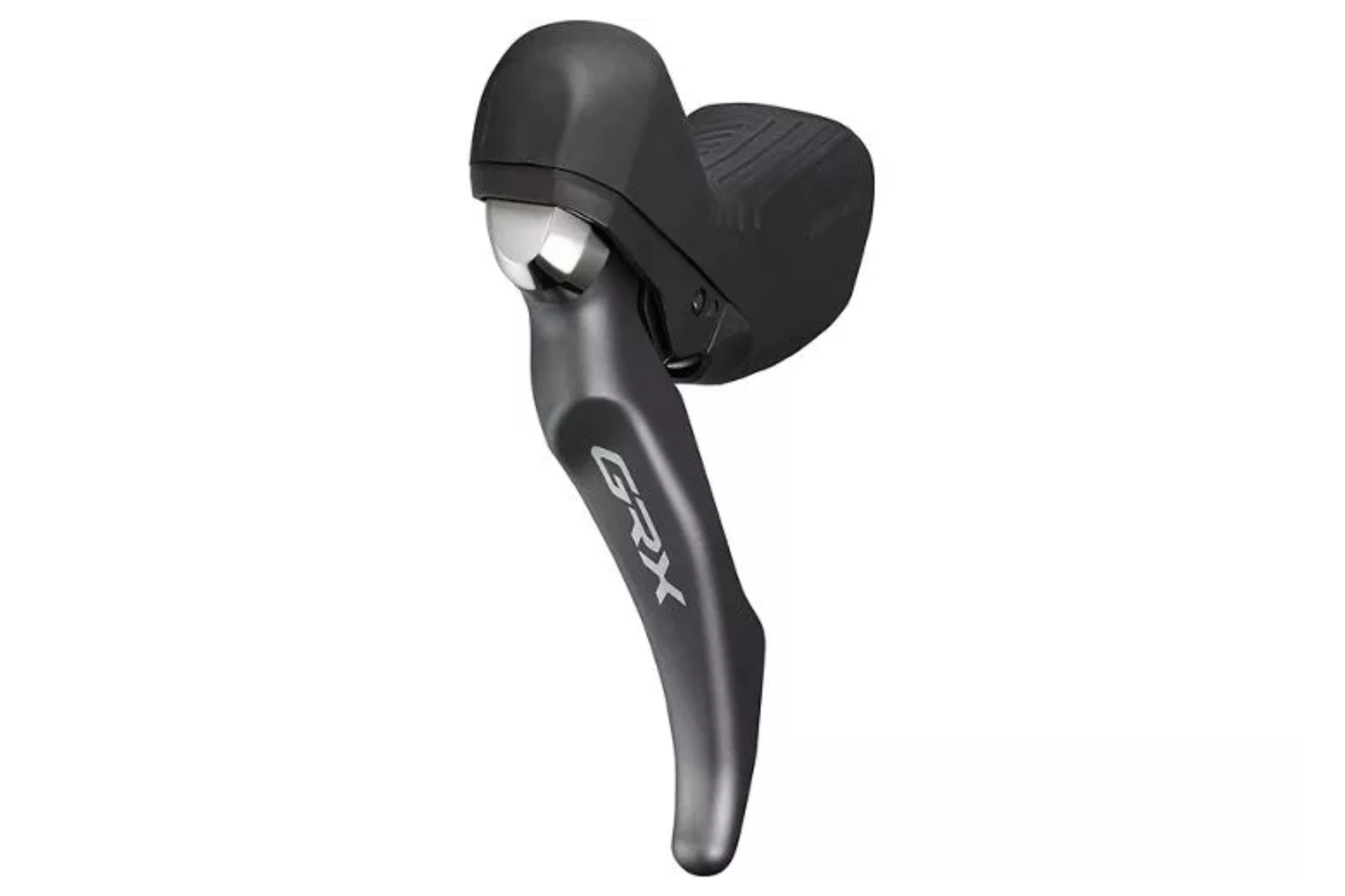
Shimano GRX ST-810-LA
Shimano GRX ST-810-LA left hand dropper lever
Our expert review:
Specifications
Reasons to buy
Reasons to avoid
Although each of the posts tested is supplied with an appropriate lever, it is also possible to mix and match most cable actuated levers as the mechanism is the same. In each review we've detailed the good and bad points of the levers as well as the posts themselves, and sometimes a good post is let down by a poor lever design.
Some companies make separate levers, and one of the best and most convenient is Shimano's GRX. This unit replaces the left hand hydraulic brake lever with the dropper post operated by swinging the brake lever inwards (as you would to change the front derailleur). This makes it very neat, easy and convenient with the only downside being that you need to be running Shimano brakes for it to integrate properly. The cockpit is kept super clean, the bars are uncluttered and it can be operated from either the hoods or the drops.
Advice
How to chose a dropper for your gravel bike
There’s actually not really anything different between a gravel dropper post and a mountain bike one – what’s key is what will fit your bike.
Many dropper posts come in various diameters, lengths and routing options but not all have all. It’s certainly worth defining what specification you need before looking at which post you fancy. That way you’ll avoid the pain of setting your heart on a particular post that won’t fit your bike. We’ve summarized the options below of those that we’ve tested in this review.
What cable routing for dropper seat posts?
Dropper posts have either internally (the most common) or externally routed cables. Whilst internal cabled droppers are the neatest and the most common (the cable emerges from the end of the post and runs through your frame to the bars) there aren’t actually that many frames that are designed to accommodate the extra cable, i.e. have a cable port near the head tube and a smooth enough transition round the bottom bracket. It is possible to make use of any existing cable ports, for instance if you run 1x shifting and have compatibility for x2, but it isn’t recommended by manufacturers as it is difficult to get round the BB. Alternative ways round this are to fit an externally routed dropper or go for one that uses wireless electronic technology.
Thanks to Hotlines for providing the cable port covers so we could fit all these droppers to a Rondo Ruut.
What length dropper do I need?
It’s easy to only think about dropper posts in the amount of drop that’s available, it’s how they’re usually specified and often named. As a general rule, you’ll want as long a drop as you can fit in your bike. But the amount of drop is only part of the equation as you need to account for the collar height and seat post head too.
There’s usually only a little variation between manufacturers in collar (~28mm) and seat post head height but it’s important to check as these things can `make a difference.
Your starting point is the length of your current seatpost, this is your “exposed seatpost” length. A dropper’s “exposed seatpost” is the length of the drop plus collar height plus clamp height must be less than your current “exposed seat post”. Or:
Current seat post > drop length + collar height + clamp height
Some manufacturers list these dimensions clearly, others give some but not all, some have fancy online calculators and others don’t give any. If in doubt, check before you buy.
What seat tube diameter do I need?
Coming from a road bike design the majority of gravel bikes take a 27.2mm seat post. This immediately limits your choice of posts with the majority being 30.9mm or 31.6mm, the larger diameters better accommodate the dropper mechanism and are the standard specification on MTBs. Remember you can always shim up a narrower post to fit a bigger frame but not the other way round. Shimming is a useful option to get a shorter travel post in a bigger seat tube frame as it’s unusual to find a post less than 100mm travel in 30.9 or 31.6mm diameter (because there isn’t the demand for short travel posts on ‘bigger’ bikes). Conversely, you’re unlikely to find a post of much more than 100-125mm drop in 27.2mm as it’s not possible to fit the bigger workings into the smaller diameter.
Will the insertion length be a problem?
A dropper post tends to need a greater length of post inside the frame than a standard one to allow for the actuation mechanism. The length of your seat tube as well as bottle cage bosses and tube curves can affect this but it generally isn’t as much of an issue as it is on mountain bikes. This is often found as part of the dimensions for the dropper length.
How important is the lever for a dropper post?
On a flat bar mountain bike the dropper lever is almost always of a thumb-operated ‘gear shifter’ design on the left-hand side, either mounted with or replacing the front shifter. Things aren’t quite as easy on drop bars and each manufacturer uses a slightly different design. As all manufacturers / posts (aside from electronic ones) use the same basic straight cable pull actuation then it’s easy to interchange and run whichever shifter you like.
Another option is to utilise the Shimano GRX ST-810-LA left-hand lever. This is a 1x specific lever that allows you to operate your dropper as it would a front mech. We tested this alongside the other levers in this review and found it to be the most reliable and easiest to operate by far. On the downside, unless you run a GRX-compatible rear brake already, then you’ll need to make changes to your brakes and even shifting to accommodate.
We've summarised our favorite levers above. Different posts and levers run the cables different ways around (the head at either the dropper or the lever end) but additional barrels are available (and usually come with the dropper post) to allow you to cable either way around. Like everything else, if in doubt check before you buy and ask your local bike shop to do the fitting.
Thanks to Upgrade for providing us with lots of Kinesis tape to rewrap our bars during all this testing.
To infinity and beyond...?
The other thing to consider is whether you want an "infinite travel" post. This term is a bit of a misnomer as these posts don't travel forever, instead it describes that you can stop the post at any point on its range of travel rather than just having "up" or "down". This can be useful for some sections where you may want your saddle a little lower for more room but at height at a point where you can still comfortably pedal.
The majority of posts feature infinitive travel. Those that don't tend to be the most lightweight models or those with minimal travel to start with.
How we test
A good dropper post should have a smooth, light action with a lever that is easy to use but doesn't get in the way and a play-free construction. It also helps if the post is available in a good range of size options and doesn't weigh too much either. Having taken all these factors into account, and used each model extensively, a rating has been given along with the various pros and cons.
The latest race content, interviews, features, reviews and expert buying guides, direct to your inbox!
Rachel has been writing about and reviewing bike tech for the last 15 years. Cynical by nature, Rachel never really trusts the marketing hype and prefers to give products a mighty good testing before deciding whether they're worth buying or not.
Rachel's first riding love is mountain biking where she's been European and UK 24hr Champion on more than one occasion. She's not just confined to the trails though and regularly rides - and occasionally races - on gravel and road too.